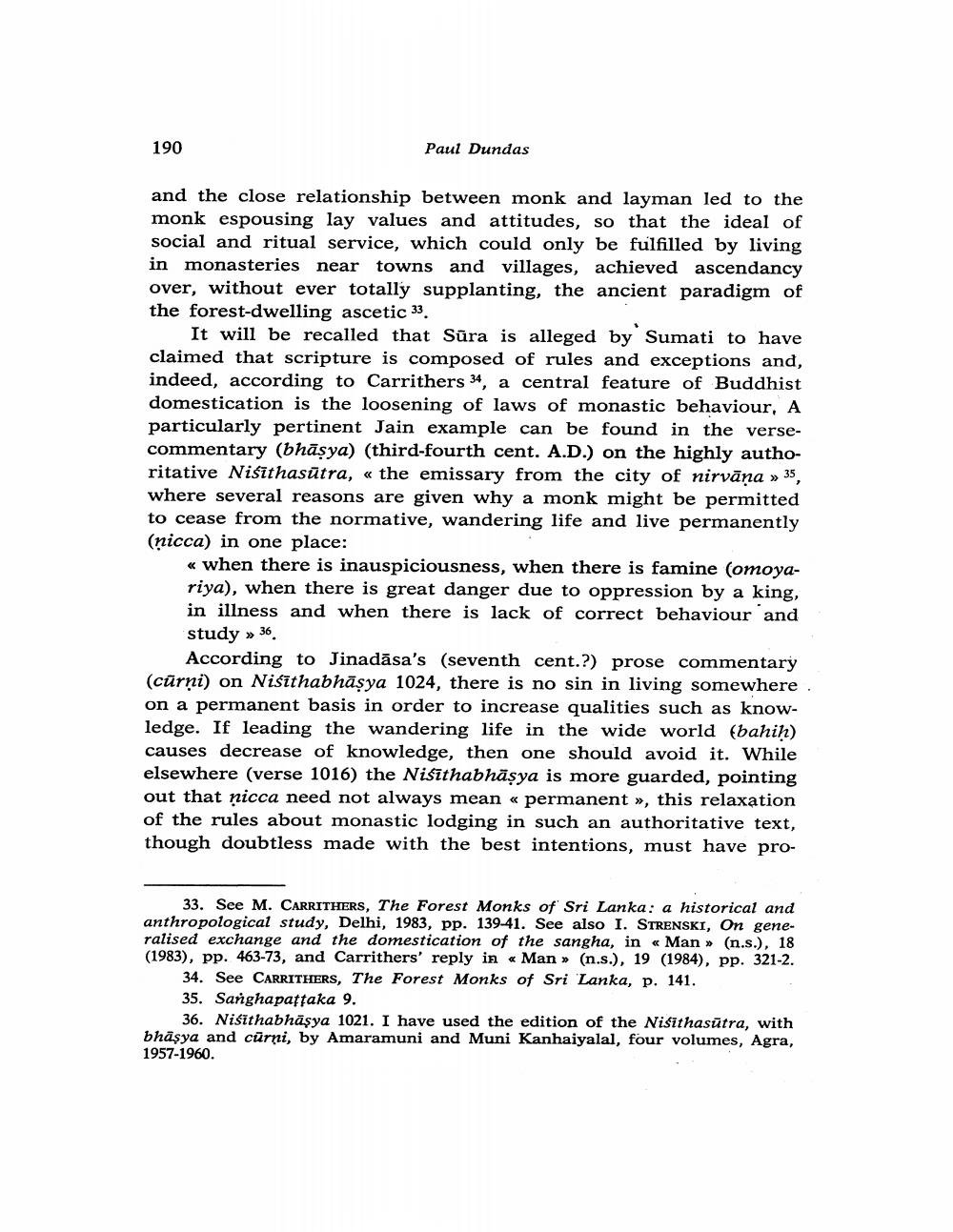________________
190
Paul Dundas
and the close relationship between monk and layman led to the monk espousing lay values and attitudes, so that the ideal of social and ritual service, which could only be fulfilled by living in monasteries near towns and villages, achieved ascendancy over, without ever totally supplanting, the ancient paradigm of the forest-dwelling ascetic 33.
It will be recalled that Sūra is alleged by Sumati to have claimed that scripture is composed of rules and exceptions and, indeed, according to Carrithers 34, a central feature of Buddhist domestication is the loosening of laws of monastic behaviour, A particularly pertinent Jain example can be found in the versecommentary (bhāsya) (third-fourth cent. A.D.) on the highly authoritative Niśīthasūtra, «the emissary from the city of nirvāņa » 35, where several reasons are given why a monk might be permitted to cease from the normative, wandering life and live permanently (nicca) in one place:
« when there is inauspiciousness, when there is famine (omoyariya), when there is great danger due to oppression by a king, in illness and when there is lack of correct behaviour and study >> 36
According to Jinadāsa's (seventh cent.?) prose commentary (cūrni) on Niśīthabhāşya 1024, there is no sin in living somewhere on a permanent basis in order to increase qualities such as knowledge. If leading the wandering life in the wide world (bahih) causes decrease of knowledge, then one should avoid it. While elsewhere (verse 1016) the Niśithabhāşya is more guarded, pointing out that nicca need not always mean « permanent », this relaxation of the rules about monastic lodging in such an authoritative text, though doubtless made with the best intentions, must have pro
33. See M. CARRITHERS, The Forest Monks of Sri Lanka: a historical and anthropological study, Delhi, 1983, pp. 139-41. See also I. STRENSKI, Оn generalised exchange and the domestication of the sangha, in «Man » (n.s.), 18 (1983), pp. 463-73, and Carrithers' reply in «Man » (n.s.), 19 (1984), pp. 321-2.
34. See CARRITHERS, The Forest Monks of Sri Lanka, p. 141. 35. Sanghapattaka 9.
36. Nisīthabhäsya 1021. I have used the edition of the Nisithasūtra, with bhāşya and cūrni, by Amaramuni and Muni Kanhaiyalal, four volumes, Agra, 1957-1960.




